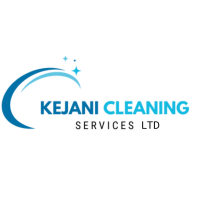Introduction
In the realm of post-construction cleaning, staying abreast of emerging trends is pivotal for maintaining efficiency, effectiveness, and competitiveness. As the construction industry evolves, so too do the demands and expectations placed on cleaning services. In this comprehensive guide, we delve into the future of post-construction cleaning, highlighting key trends that industry professionals need to watch closely.
Innovative Cleaning Technologies
Post-construction cleaning is witnessing a paradigm shift with the integration of innovative technologies. From robotic cleaners capable of navigating intricate spaces to advanced cleaning solutions leveraging nanotechnology, the future promises unprecedented efficiency and precision in cleaning processes. These technologies not only streamline operations but also enhance safety and sustainability, setting new standards for the industry.
Sustainable Practices and Eco-Friendly Solutions
With environmental consciousness on the rise, the future of post-construction cleaning is decidedly green. Clients increasingly demand eco-friendly solutions that minimize environmental impact without compromising on quality. From biodegradable cleaning agents to energy-efficient equipment, sustainability is becoming a cornerstone of post-construction cleaning practices, aligning with broader global initiatives for a greener future.
Data-Driven Cleaning Strategies
The advent of IoT (Internet of Things) is revolutionizing post-construction cleaning by providing unprecedented insights into cleaning processes and performance metrics. Smart sensors embedded in cleaning equipment gather real-time data, enabling companies to optimize cleaning schedules, resource allocation, and quality control. Harnessing the power of data analytics, cleaning companies can deliver more tailored and efficient services, driving customer satisfaction and operational excellence.
Utilizing IoT for Enhanced Efficiency
IoT-enabled cleaning equipment collects data on usage patterns, enabling predictive maintenance and optimizing resource allocation.
Data Analytics for Performance Optimization
Advanced analytics algorithms analyze cleaning data to identify trends, inefficiencies, and areas for improvement, empowering companies to refine their strategies continually.
Personalized Customer Experiences
As customer expectations evolve, post-construction cleaning services are embracing personalization to deliver tailored experiences. From customizable cleaning packages to flexible scheduling options, the emphasis is on catering to the unique needs and preferences of each client. By fostering stronger client relationships and exceeding expectations, cleaning companies can differentiate themselves in a competitive market landscape.
Upskilling and Training Initiatives
With the proliferation of new technologies and evolving cleaning practices, investing in employee training and upskilling has become imperative. Companies are increasingly focusing on comprehensive training programs to equip their workforce with the skills and knowledge needed to excel in a rapidly changing industry. By nurturing talent and fostering a culture of continuous learning, cleaning companies can adapt to emerging trends seamlessly and deliver exceptional service quality.
Enhanced Safety Protocols
Safety has always been paramount in post-construction cleaning, but the future heralds a heightened emphasis on safety protocols and standards. With increased awareness of health risks and regulatory requirements, cleaning companies are implementing rigorous safety measures to protect workers and clients alike. From specialized training on handling hazardous materials to stringent adherence to safety guidelines, ensuring a safe working environment is non-negotiable.
The Future of Post-Construction Cleaning: Trends to Watch
As we peer into the future of post-construction cleaning, several trends are poised to reshape the industry landscape. Embracing innovative technologies, prioritizing sustainability, and fostering a culture of continuous improvement will be instrumental in staying ahead of the curve. By anticipating and adapting to these trends, cleaning companies can position themselves as industry leaders and thrive in an increasingly competitive market.
Frequently Asked Questions
- How can cleaning companies integrate sustainability into their practices? Sustainable practices can be integrated by using eco-friendly cleaning agents, adopting energy-efficient equipment, and implementing waste reduction strategies.
- What are the benefits of data-driven cleaning strategies? Data-driven strategies enable cleaning companies to optimize resource allocation, enhance operational efficiency, and deliver more personalized services tailored to client needs.
- How can IoT technology enhance post-construction cleaning processes? IoT technology provides real-time insights into cleaning operations, enabling predictive maintenance, performance optimization, and enhanced monitoring of cleaning activities.
- Why is upskilling important for cleaning professionals? Upskilling ensures that cleaning professionals stay abreast of emerging technologies and best practices, enabling them to deliver high-quality services and adapt to evolving industry trends.
- What measures can cleaning companies take to ensure safety in post-construction cleaning? Cleaning companies can implement comprehensive safety training programs, provide personal protective equipment, and adhere to strict safety protocols to minimize risks and ensure a safe working environment.
- How can cleaning companies differentiate themselves in a competitive market? By offering personalized services, prioritizing customer satisfaction, and investing in employee training and development, cleaning companies can differentiate themselves and build a loyal client base.
Conclusion
As the landscape of post-construction cleaning evolves, staying ahead of emerging trends is crucial for success. By embracing innovation, sustainability, and a customer-centric approach, cleaning companies can navigate the challenges and capitalize on the opportunities presented by the evolving industry landscape. By continually adapting and refining their strategies, they can position themselves for sustained growth and prominence in the competitive market.





0 Comments